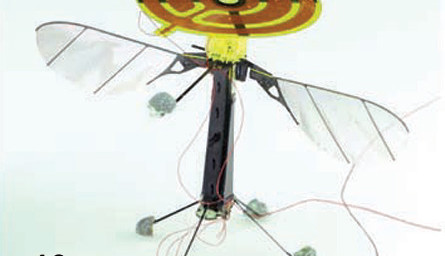Robot insects land to take a break
June 15, 2016
on
on

Researchers at Harvard University (USA) have developed flying microrobots that can land to save energy, just like real insects. These miniature flying robots go by the name “RoboBees.”
Many potential applications for drones require keeping a small drone in the air for an extended period, but most drones do not have enough energy on board for this. One option is to allow the drones to land somewhere for a while. However, this needs to be possible in every situation. By taking a good look at real insects and applying some simple physics, the researchers found a suitable solution.
Many insects use barbed hooks or a sort of adhesive to cling to a wall or a leaf, but these methods are not suitable for robots the size of a paper clip. For that reason, the researchers decided to use electrostatic adhesion to keep their robots attached to the substrate. Only a small amount of energy is necessary to maintain enough attractive force to secure a robot weighing about 100 mg.
Many potential applications for drones require keeping a small drone in the air for an extended period, but most drones do not have enough energy on board for this. One option is to allow the drones to land somewhere for a while. However, this needs to be possible in every situation. By taking a good look at real insects and applying some simple physics, the researchers found a suitable solution.
Many insects use barbed hooks or a sort of adhesive to cling to a wall or a leaf, but these methods are not suitable for robots the size of a paper clip. For that reason, the researchers decided to use electrostatic adhesion to keep their robots attached to the substrate. Only a small amount of energy is necessary to maintain enough attractive force to secure a robot weighing about 100 mg.
Read full article
Hide full article



Discussion (0 comments)